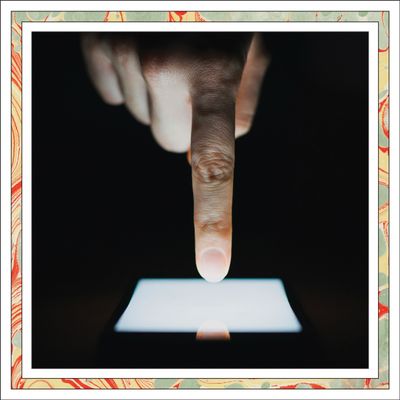
Why are we so skeptical of the things right in front of us? “Turns Out It’s Pretty Good” is a series that examines the path from resisting the well known to wholeheartedly endorsing it.
My relationship with Twitter began over a decade ago. It was 2008, I was living in San Francisco, and an ex had rolled in from New York. I remember, distinctly, how he extolled the app’s virtues. You can start a conversation with just about anyone, even celebrities. At the time, his using a tech platform on the East Coast — one that I was only dimly aware of on the West — felt like a bit of an affront. But within a few months, he was gone from Twitter. I remained.
It’s been a rough ride. For a few years, it felt distinctly nonprofessional and fun, then very professional, then very un-fun, especially in the wake of Gamergate’s organized harassment and attacks. Throughout the Trump era, Twitter had been a chaotic mess, and I often wondered what it would be like to leave the site entirely and try other ways of getting news. The idea that I needed to be on Twitter “for work” seemed more and more difficult to maintain when most of my bosses had decided it was unhealthy to be spending too much time there. Then COVID hit, and the whole world got addicted to “doomscrolling,” a word invented (or at least popularized) by journalist Karen K. Ho to describe the incessant checking of mostly godawful news in 2020.
I kind of hate that “doomscrolling” is a word that no one ever had to explain to me; knowing its meaning early on is just another sign that I have spent way too much time on Twitter, which is universally understood to be not good. It is not good for your mental health, it is not good for bedtime reading, it is not good for avoiding Nazis and members of the Trump family. If self-loathing accounts for the emotional engine of 80 percent of tweets, to be active on Twitter is to acknowledge that there is something wrong with you.
And yet, during this terrible year, staring at Twitter has felt unexpectedly enjoyable. Even reassuring.
It is enjoyable because people have been putting the best TikToks on Twitter, where people my age can see them. It’s reassuring because if you’re craving attention from other humans — say, during quarantine — Twitter can put you in touch with them. Other social networks exist for connection, of course, but my personal platform library has been reduced to Instagram and Slack (I refuse to admit that I check LinkedIn, whatever my browser history might suggest). A few years ago, I left Facebook as an experiment in self-awareness and never returned. Instagram, as Stella Bugbee has explored on this site, is fraught with questions of aspiration and representation. Twitter is a malformed but real antenna to the outside world. In 2020, at times, it felt almost kind of … fun?
Earlier this month, I opened the site on my desktop to see that, under the banner of “What’s Happening,” the top item was, “It’s Adam Driver’s Birthday [cake emoji]”. Under that: “Grosse Pointe Antifa,” “Michigan GOP,” and “Marisa Tomei.” Every day brings a different, small reminder of the surreal nature of our reality: The Finding Nemo dad is hot?; the horse weighs 15,000 pounds; now-fired Trump elections official likes pineapple on his pizza.
Maybe Twitter was the right platform for a year of overwhelming pain and absurdity. Nothing matters, so how can you take the pettiness of Twitter seriously? It felt good to shout nonsense into a void and occasionally have people shout back at you. The closest I’ve come to collective cultural moments this year have been on Twitter, where pockets of people will talk to me about the casting of Edgar Ramirez in The Undoing or bring forth the true story of Four Seasons Total Landscaping. To borrow from E. Alex Jung, being online is the only way to experience the incongruity of “quarantine culture.” If Twitter is a place where people go to be miserable, then it’s at least a place where we could be miserable together.
Over the past few weeks, as the virus surges, the quiet has returned to my corner of Brooklyn. On Twitter, people are still shouting over each other, taking on the role of election-law scholar, or chess grand master, or media analyst, or medieval-history professor, or whatever the moment calls for opinions on. The Nazis and bots march on. Here, I’m tempted to slink back into the reflexive Twitter crouch: It’s terrible, and no one should be on it, and yet many of us are logged on, because we are idiots. This might be true.
But I guess I don’t think that avoiding doomscrolling is actually possible, in the same way that there is no way to “eat clean.” All eating is dirty, and all scrolling is doom. I can wave my hands all day and say Twitter is the devil, but it’s hot air, like Liz Lemon sticking her hand in a bag of off-brand Cheetos as a sign of decaying health, as if she had ever had to struggle to pay for a doctor’s appointment. Enjoying Twitter for even a minute is a luxurious position, but performatively hating it is, too.
The reason I don’t miss Facebook is because I never really liked it. The reason that I stayed on Twitter is, for better or worse, it has served some human need. In normal times, that need for attention or dopamine hits could be more easily satisfied by, you know, your actual friends and family. Most nights, though, I sleep quite well after hours of scrolling. When you are alone and awake, awash in that blue light under the covers, Twitter can be pretty good.
More Turns Out It's Pretty Good
- Turns Out It’s Pretty Good: Getting a Christmas Tree
- Turns Out It’s Pretty Good: Enemies
- Turns Out It’s Pretty Good: The Grinch




